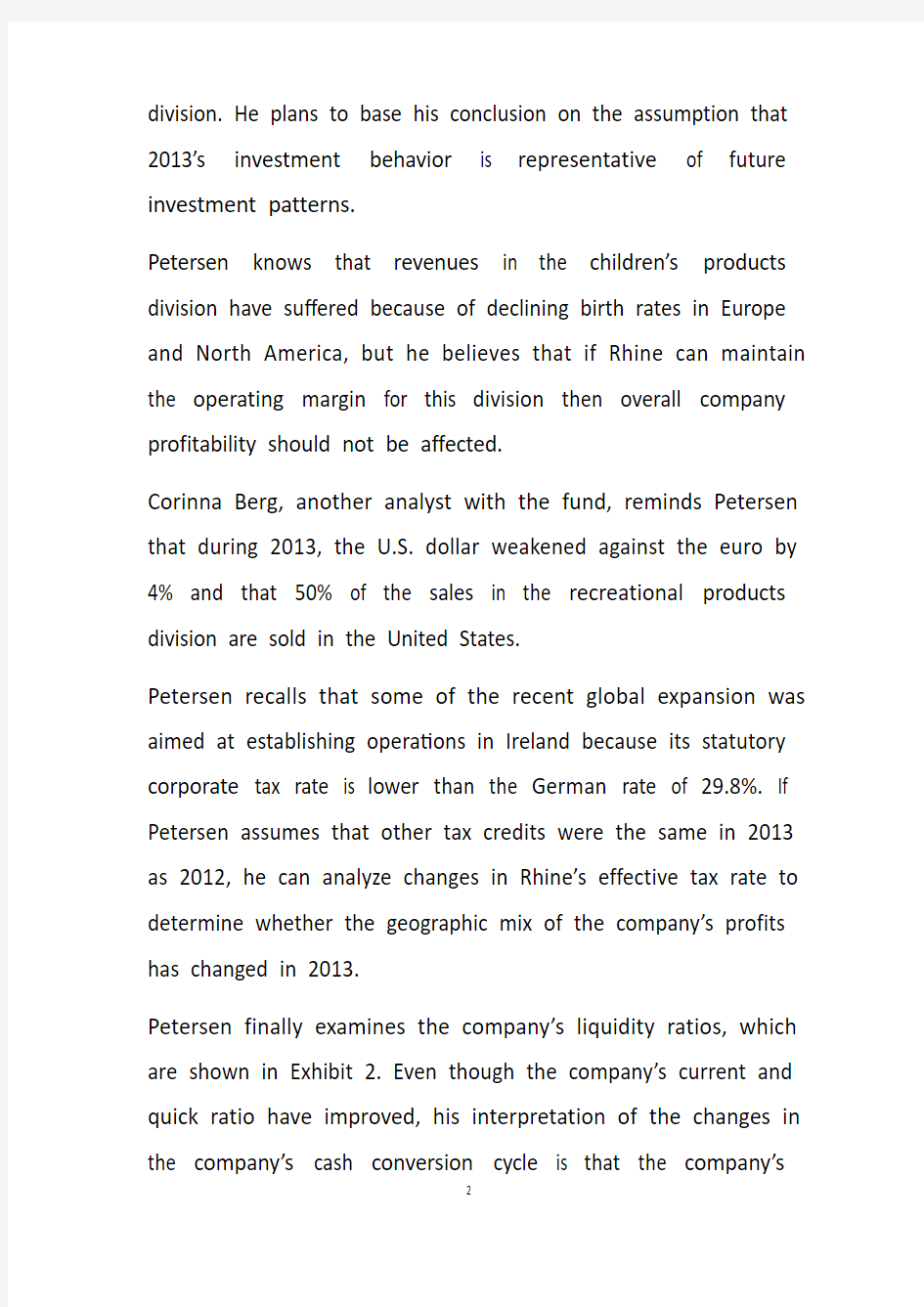

CFA二级练习题精选及答案0516-1
Rhine Claus Petersen, a pension fund equity analyst, is preparing an analysis of Rhine AG for the upcoming quarterly fund meeting. Rhine is a Germany-based manufacturer that operates three distinct divisions: children’s products (infant car seats, strollers, cribs, etc.), recreational products (bicycles, bicycle trailers, etc.), and home furnishings (contemporary furniture). All three divisions sell through retail outlets around the world.
The company has been pursuing an aggressive growth strategy, achieved through both foreign acquisitions and organic growth. Petersen is interested in determining how well Rhine is allocating its resources between the three divisions and the effects of the foreign acquisitions on overall performance. Exhibit 1 summarizes selected divisional and corporate data for 2013 and 2012.
Petersen’s preferred method to determine which division is becoming less significant over time is to review the relationship between capital expenditures and total assets by operating
division. He plans to base his conclusion on the assumption that 2013’s investment behavior is representative of future investment patterns.
Petersen knows that revenues in the children’s products division have suffered because of declining birth rates in Europe and North America, but he believes that if Rhine can maintain the operating margin for this division then overall company profitability should not be affected.
Corinna Berg, another analyst with the fund, reminds Petersen that during 2013, the U.S. dollar weakened against the euro by 4% and that 50% of the sales in the recreational products division are sold in the United States.
Petersen recalls that some of the recent global expansion was aimed at establishing operations in Ireland because its statutory corporate tax rate is lower than the German rate of 29.8%. If Petersen assumes that other tax credits were the same in 2013 as 2012, he can analyze changes in Rhine’s effective tax rate to determine whether the geographic mix of the company’s profits has changed in 2013.
Petersen finally examines the company’s liquidity ratios, which are shown in Exhibit 2. Even though the company’s current and quick ratio have improved, his interpretation of the changes in the company’s cash conversion cycle is that the company’s
liquidity position has deteriorated.
Worried that the balance sheet–based and cash flow–based accruals ratios (not shown) raise some concerns about the possible use of accruals to manage earnings, Petersen asks Berg for advice on what further type of analysis he should do as a follow-up on this issue.
1. Using Petersen's preferred method and 2013 divisional data, the best conclusion Peterson can make about which division will potentially become less significant in the future is that it will be:
A. Home furnishings.
B. Recreational products.
C. Children's products.